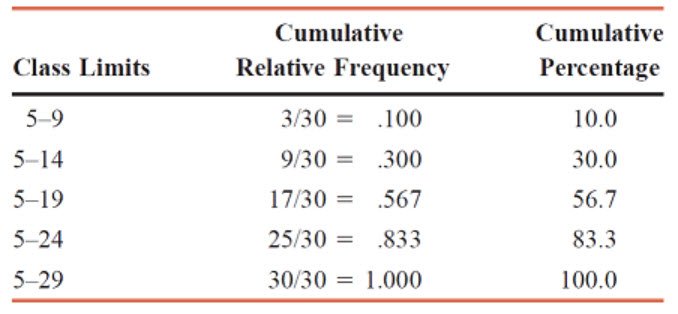A cumulative percentage distribution (CPD) is a distribution that draws its results from a known number generator, called a cumulative distribution function. By “knowing” the value of the number or “confidence” can be used to evaluate various outcomes and probabilities. CPDs are very useful for making statistical analyses and other probability studies. As an example, let’s say we would like to investigate the impact of the minimum wage law on the employment rate across cities. In that case, we could plot a cumulative percentage distribution concerning one variable (the employment rate). Using this data, we could determine the effect of a minimum wage law by aggregating cities and their experience with minimum wage laws over time. This kind of aggregate approach allows researchers to conclude national or local trends.

The CPD works by calculating the cumulative percentages over time of the outcome of an economic variable. For example, the national unemployment rate over time can be studied using a CPD. The resulting values can then be combined with data on counties with high unemployment concentrations and information about the average hourly wages of those counties. When we combine the two numbers, we are able to estimate the employment rate across the nation. In this case, by averaging the values over time, we are implementing a cumulative percentage distribution function or CPT.
Using the CPT results from a CPD, we can then examine how the distribution of hourly wages varies by county in the United States. The CPT produces two types of distributions: normal distributions and curvilinear (C Tort) distributions. Let’s look at the first one more closely. Here are the characteristics of a typical CPT Summary Table.
The first row of the table displays the name of the county or city, and the second row displays the name of the CPT distribution. To construct the cumulative probability graph Excel uses a unique formula called the “tag function.” The formula is as follows. We use the term “t,” where “t” is the number one through to “n,” the number two in the range specified by the “tag” formula.
The next step in constructing a CPT spreadsheet is to find the name of the t function. Once you have found the “t” function, you need to enter its name into a search engine to locate it. You can find this name under “Fract” or “Sweep.” Using our example, the search engine should be “estate.” After entering the”t” function, hit “Search,” then you will see the “Search” symbol.
Following is the name of the data series you’ll be working with. Our CPT graph will cover all 50 states, so we chose “counties” in our example. The name of the series appears automatically when you type it in. If you double-click, you can see more details. To build a cumulative frequency distribution, choose the shape and size of the line. Click on “ams” or “dots” on your keyboard to select shapes.
Finally, it would help if you determined how many equal intervals exist between the x values. In our example, we choose five intervals. Next, you need to type in the x value of the corresponding interval. With this step finished, you will see an effortless cumulative frequency distribution plotted on your Excel workbook.
One final step to plot a CPP is to select “Net Profit” as the range of prices for goods in your store. Click “OK.” You will then notice that a new range will appear on your worksheet. It’s calculated as the sum of the prices you’ve entered. Now, you can plot your first customer’s cumulative mean. I hope that by following these instructions, you will be able to figure out how to create your own CPP.

Good day I am so grateful I found your weblog, I really found you by mistake, while I was searching on Askjeeve for something else, Anyhow I am here now and would just like to say many thanks for a tremendous post and a all round exciting blog (I also love the theme/design), I don’t have time to look over it all at the moment but I have book-marked it and also included your RSS feeds, so when I have time I will be back to read a lot more, Please do keep up the fantastic jo.|
First off I would like to say excellent blog! I had a quick question in which I’d like to ask if you do not mind. I was interested to know how you center yourself and clear your thoughts before writing. I’ve had a hard time clearing my mind in getting my thoughts out. I truly do take pleasure in writing but it just seems like the first 10 to 15 minutes are usually lost just trying to figure out how to begin. Any suggestions or hints? Appreciate it!|
Hello, I am Kavin, it’s my first occasion to comment anywhere when I read this paragraph I thought I could also create comments due to this good post.|